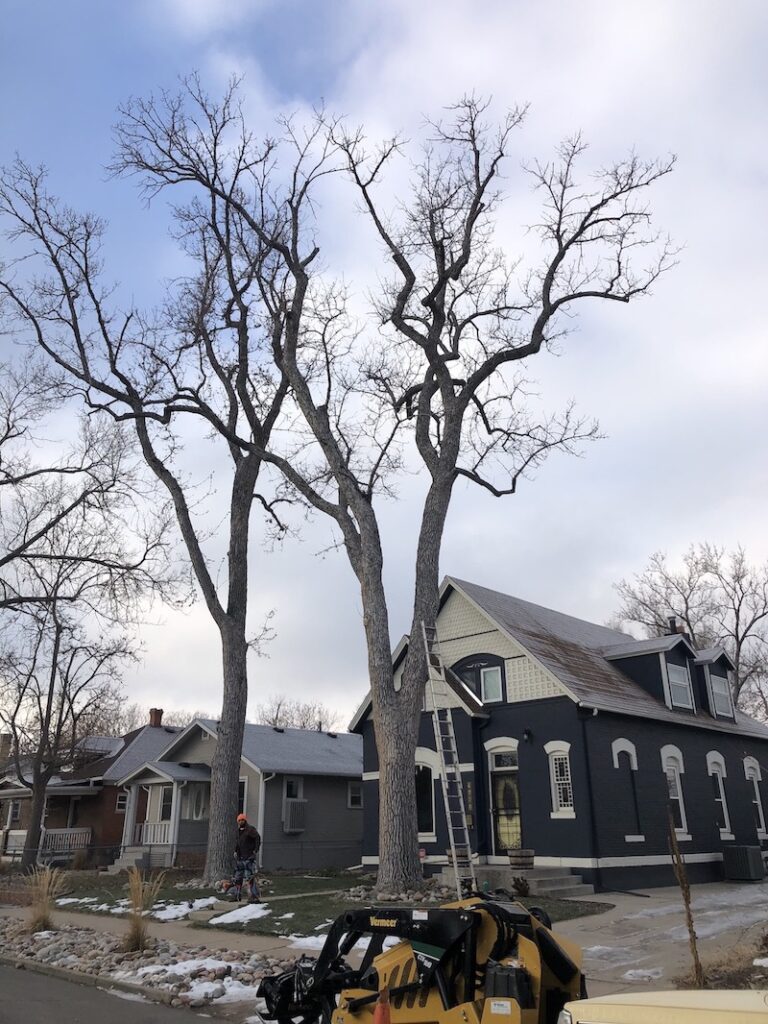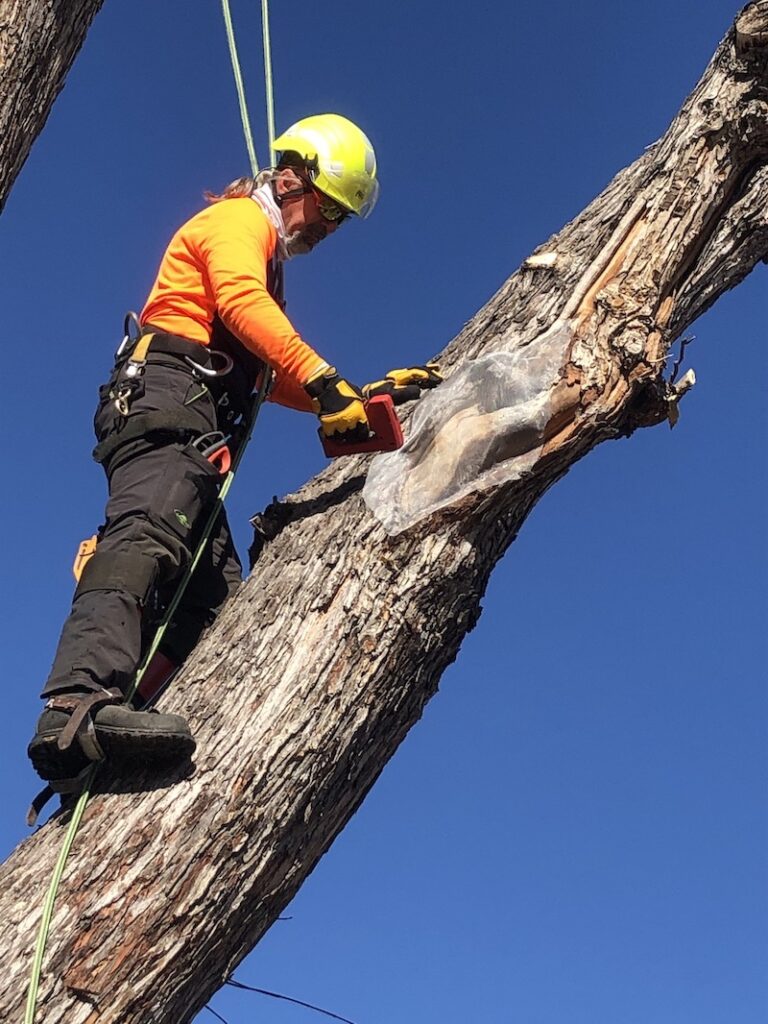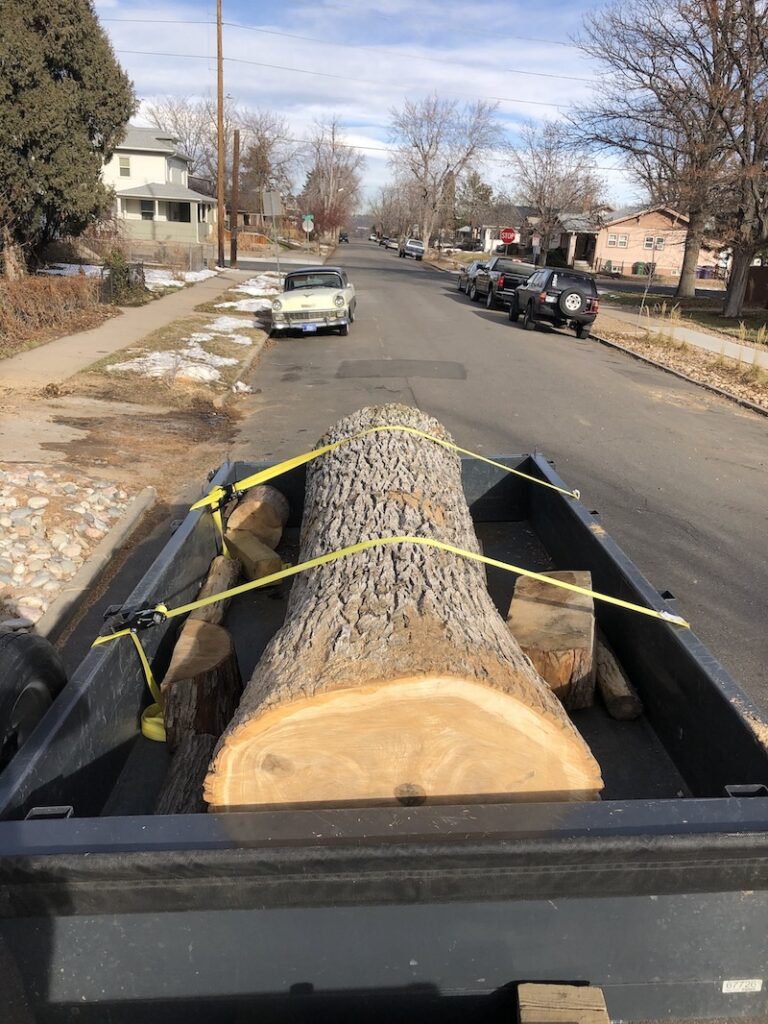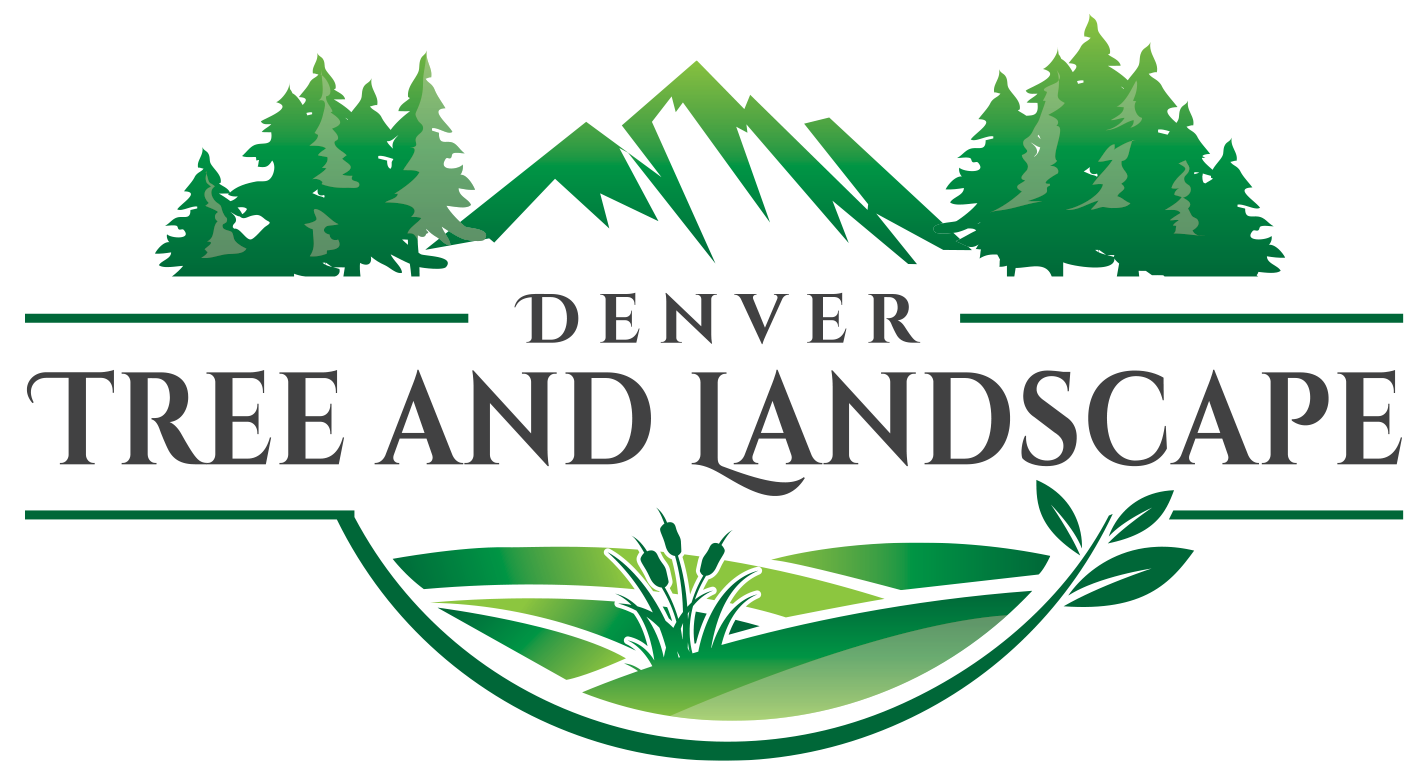
The crews with our tree removal services are experienced and well-trained to work as a team and safely remove even the largest trees in the tightest residential spaces using the safest techniques. You can be confident that our work at your home or business will be done carefully and efficiently.
Our teams are headed up by certified arborists. These professionals have a deep understanding of tree anatomy so they can plan for the effects of the weight displacement and the torque forces that will come to bear in the course of the tree removal – even in the most seemingly straightforward removals.
After we remove your trees, the arborists and other consultants at Denver Tree and Landscape will be happy to help you redesign your space with new trees, shrubbery, or patio areas.
Tree Removal for Dead Trees
Dead trees should be removed from your property as soon as possible before they start to decay or become infested with insects that can also make their way to other trees or nearby structures. Dead trees are also a significant hazard to structures and people. Over time, the trunks and roots are no longer able to support the tree’s weight, and decay will inevitably weaken major, heavy branches.

Tree Removal Services for Property Safety
You or a previous owner of your property may have planted a tree decades ago that has now outgrown its space. Even a healthy tree can pose a danger if it becomes overgrown and is in close proximity to structures or utilities. Often tree trimming is no longer an option in these cases since all the pruning must be done on one side, leaving a precariously unbalanced tree. Additionally, the trees on your property may grow to the point where they obstruct views or unsafely obscure your home.
Tree Removal Due to Disease
Depending on the tree genus or species, they can be subject to a variety of deadly diseases. In Colorado, Poplar (including Aspen and Cottonwoods) and Elm trees are especially susceptible to a several varieties of canker fungi that destroy their bark. For example, the Anthracnose fungi can ruin Maple, Elm, and Sycamores. Fireblight bacteria affects certain fruit trees.
If you suspect that a fungus or disease is attacking your trees, the arborists at Denver Tree and Landscaping can quicky diagnose the problem and let you know if treatments are available. If the trees are hopelessly lost, though, they must be removed to minimize the chance of the disease or fungus spreading.

Tree Removal Due to Infestation
Tree removal is also advised if a tree has been fatally compromised by burrowing organisms. The Emerald Ash Borer is one of the most significant threats in our area. The larvae of this shiny green beetle feed on the inner bark of ash trees. By the time the damage is apparent, it may be too late to save the tree. Similarly, Elm Bark Beetles can undermine and weaken Elm trees. These beetles also tend to seek shelter in nearby homes and structures in the wintertime.
Our arborists can discuss whether the tree can be saved, and if so, the treatment options. If they’ve been dangerously weakened, we can safely remove the trees and then discuss replanting or other landscaping options with you.
Removing “Volunteer” Trees
In nearly every case, it’s advisable to remove trees that have sprouted naturally from seeds that Mother Nature has deposited in your yard. These trees (typically Ailanthus trees, also known as Tree of Heaven or Sumac) grow quickly and often have extensive shared root systems that can destroy sprinkler and other underground lines as well as concrete and foundations. Since these trees tend to be so invasive, pulling up one chute may not keep others from sprouting.
We can advise you on how to rid your yard of these nuisance trees and, with our tree removal services, we can safely remove those that have become too large to pull.
Removing and Grinding Stumps
Tree removal isn’t complete until the stump and surface roots are gone and the terrain is ready for grass or other landscaping. After we remove your trees, our team will grind the stumps down 4-12 inches below the surface or in accordance with city codes. Additionally, we can grind out all the visible tree roots that have extended along the surface.
Honeybee Harvesting During Tree Removal
Before we remove your tree, we’ll safely capture and preserve any honeybee colonies that have made a home in the tree. Our team will come by in the evening, one day before our work is scheduled, to safely seal off the hive, remove the affected portion of the tree, and then transport the hive to our honeybee keepers.
Whatever your needs for Denver Tree Removal Services, we can help!

REQUEST A QUOTE


